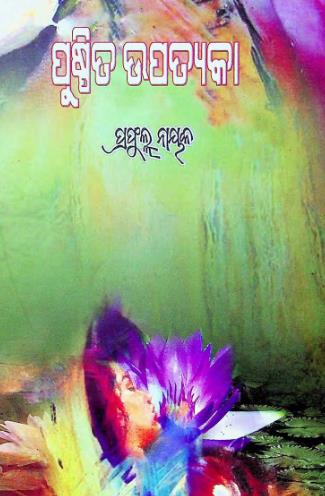Published in 2017, Puspita Upatyaka by Prafulla Naik emerges as a significant contribution to contemporary Odia literature. This novel not only captivates readers with its imaginative storytelling but also delicately weaves themes of love, identity, and the complexities of human relationships against the backdrop of rural Odisha. Naik, known for his nuanced writing and profound characterization, crafts a narrative that resonates deeply with the cultural essence of the region.
The title Puspita Upatyaka translates to “Blossoming Valley,” and this metaphor encapsulates the novel’s exploration of growth and renewal. The story is set in a picturesque village, where the natural beauty of the landscapes plays an integral role in shaping the characters’ lives and experiences. Naik paints vivid imagery of the valley’s flowers and flora, using them as symbols of hope, love, and the fleeting nature of beauty. This lush setting serves not only as a backdrop but also as a character in its own right, reflecting the emotional landscapes of the protagonists.
At the heart of Puspita Upatyaka lies a poignant love story that unfolds through the lives of its main characters, whose dreams and aspirations intertwine. The protagonist, a young man from the village, navigates the challenges of societal expectations, familial obligations, and personal desires. His journey is mirrored by the female lead, a strong and independent woman who desires to break free from traditional constraints.
Naik’s skillful character development allows readers to engage with each personality on a deep emotional level. The dialogue is rich and evocative, revealing the inner turmoil and struggles of the characters as they confront their realities. The conflicts they face are both internal and external, reflecting broader societal themes such as gender roles, social hierarchy, and the quest for self-fulfillment.
One of the novel’s most compelling aspects is its exploration of identity and belonging. As the characters grapple with their personal ambitions and societal norms, readers are invited to reflect on their own sense of place within their communities. Naik deftly examines how external pressures can shape individual choices, often leading to a conflict between personal desires and cultural expectations. This tension adds depth to the narrative, inviting readers to empathize with the characters’ struggles.
Moreover, Puspita Upatyaka highlights the significance of love—not just romantic love, but also familial love and friendship. These relationships serve as pillars of support for the characters, illustrating how human connections can provide strength in the face of adversity.
Prafulla Naik’s writing style is marked by lyrical prose and an expressive narrative voice. His ability to evoke emotion through detailed descriptions and thoughtful reflections enhances the reading experience. The novel’s pacing allows for moments of introspection, encouraging readers to pause and consider the themes presented.
With Puspita Upatyaka, Naik has crafted a novel that transcends mere storytelling. It resonates with contemporary readers, particularly those navigating the complexities of modern life while seeking roots in traditional culture. As such, this book has garnered attention not just for its literary merit, but also for its social relevance.
In summary, Puspita Upatyaka by Prafulla Naik is a beautifully rendered novel that invites readers to explore the depths of human emotion and the intricate dance between tradition and modernity. By focusing on themes of love, identity, and belonging, Naik creates a rich tapestry that reflects the realities of life in rural Odisha. As readers journey through the blossoming valley, they are left with a sense of hope and the understanding that, like the flowers in the valley, resilience and beauty can flourish even in the face of life’s challenges.
Books Info
| Books name | Puspita Upatyaka |
| Editor | Prafulla Naik |
| No Of pages | 188 |
| Publisher | Kahani |
| Publication | 2017 |
| Printed At | Techno Arts Of Set |
| Distributor | NA |

